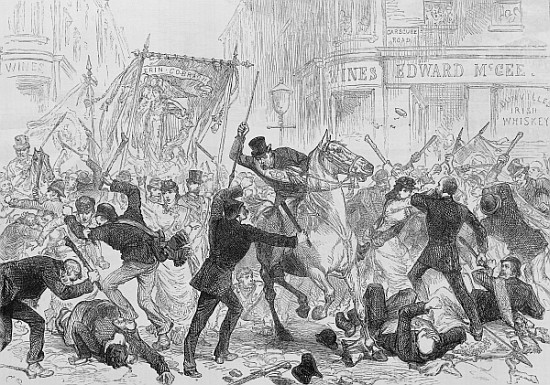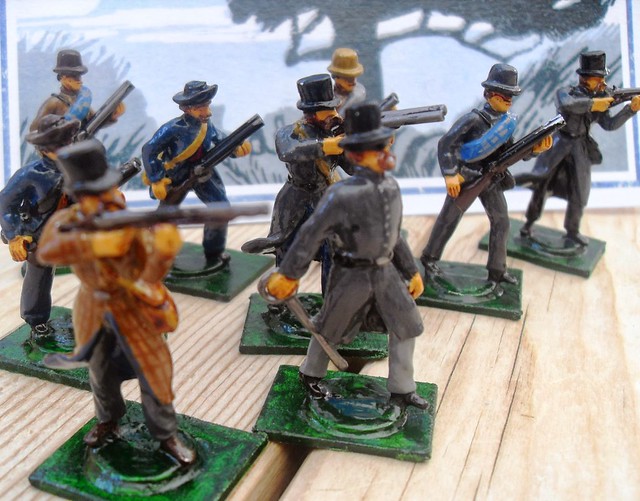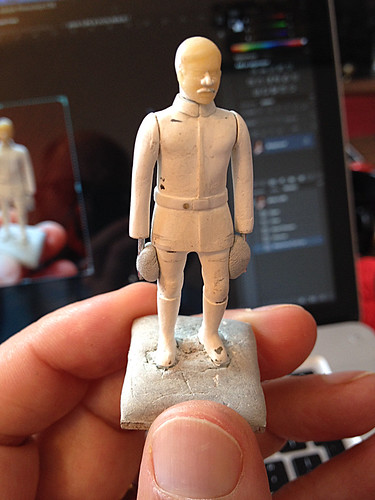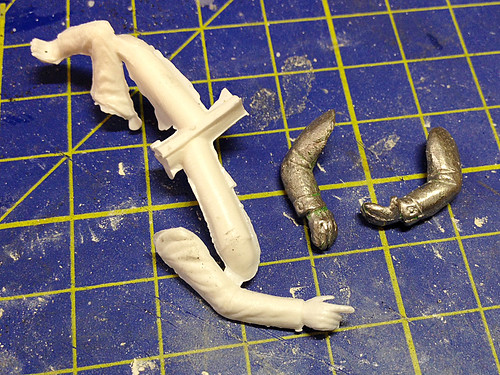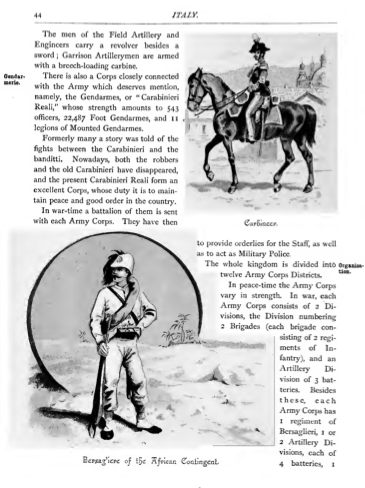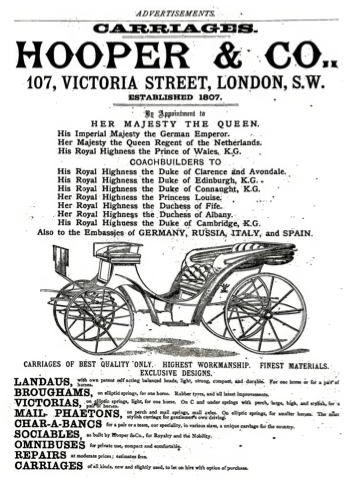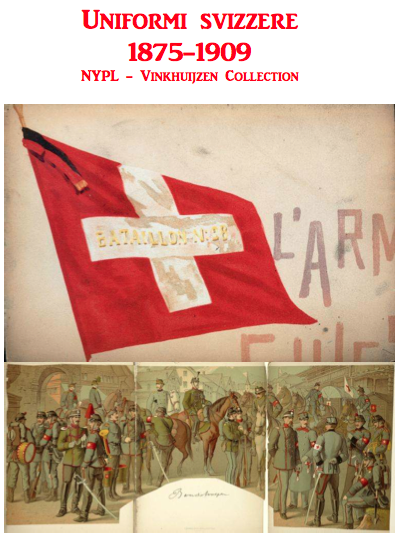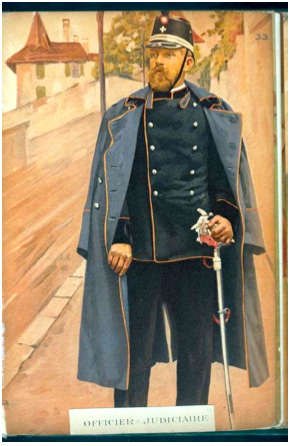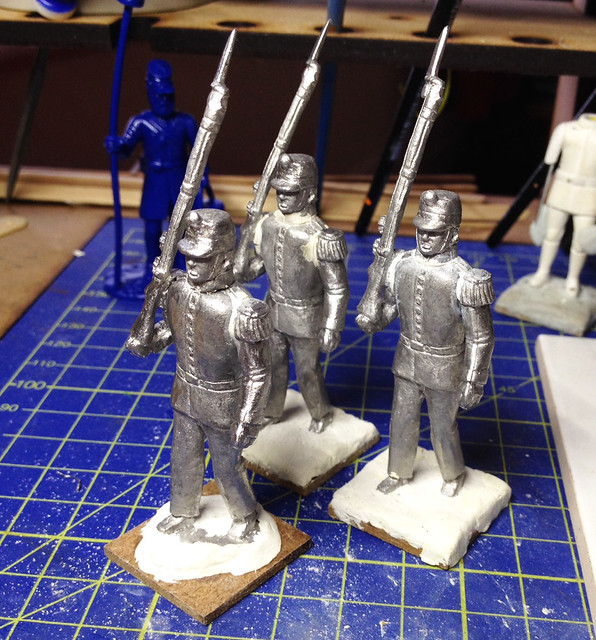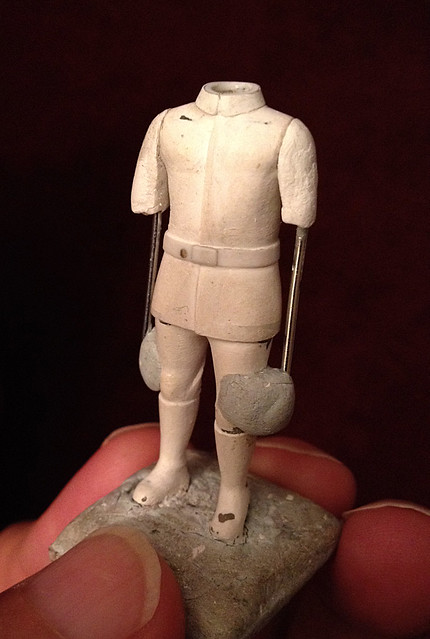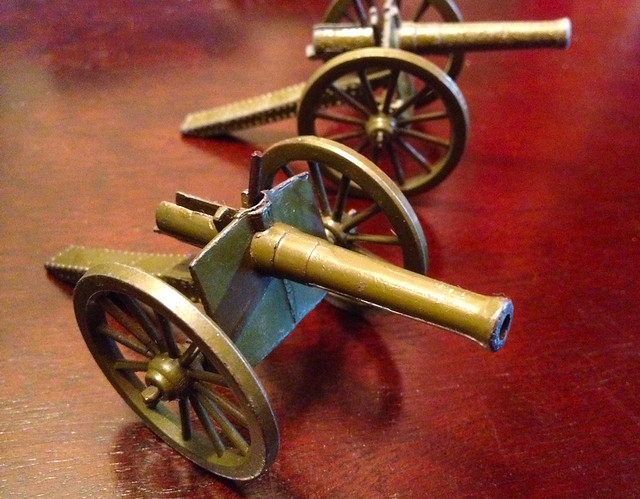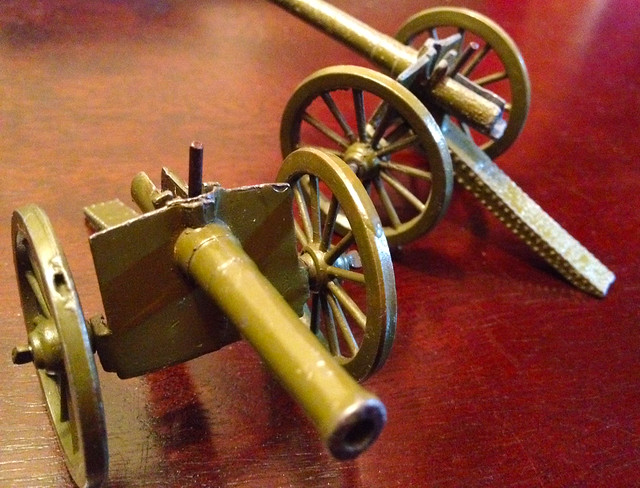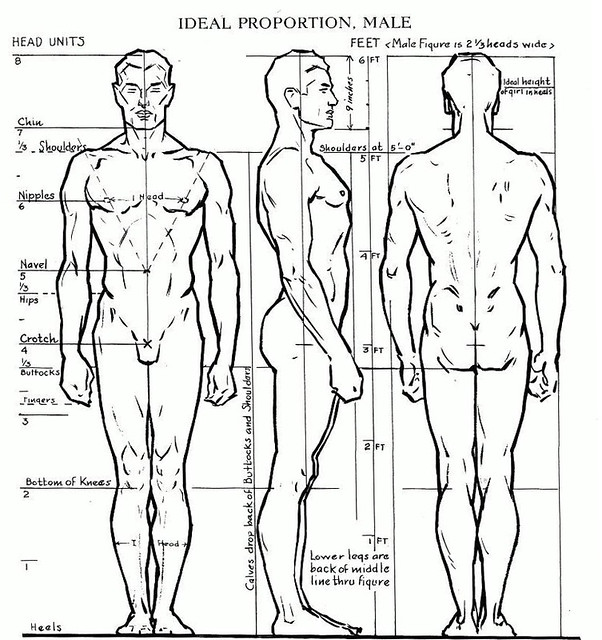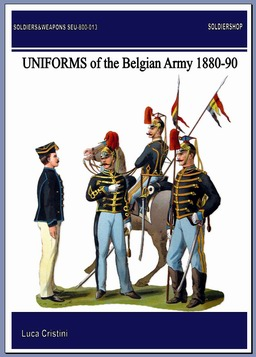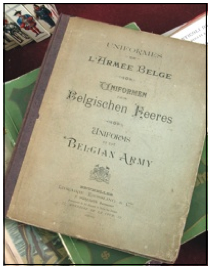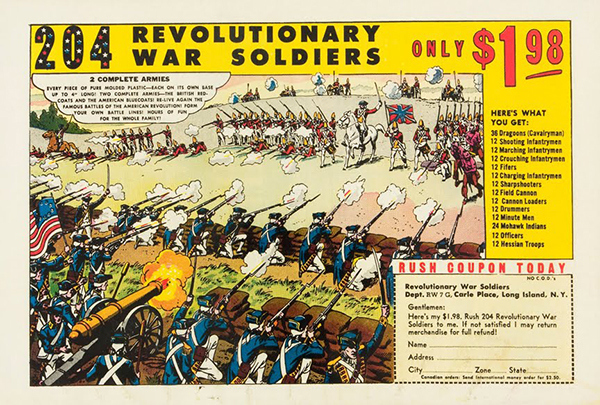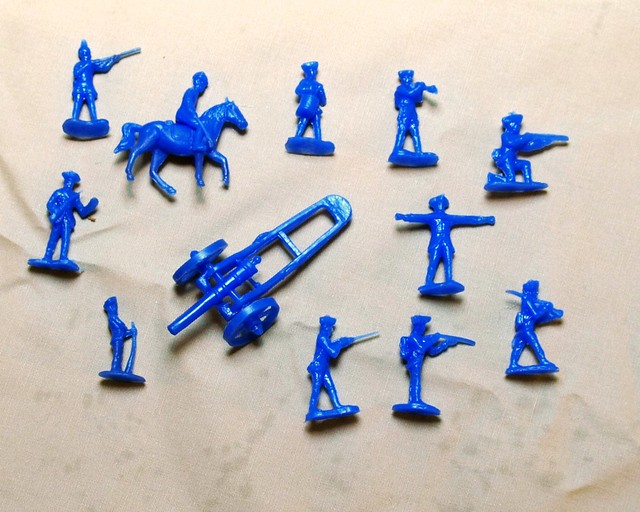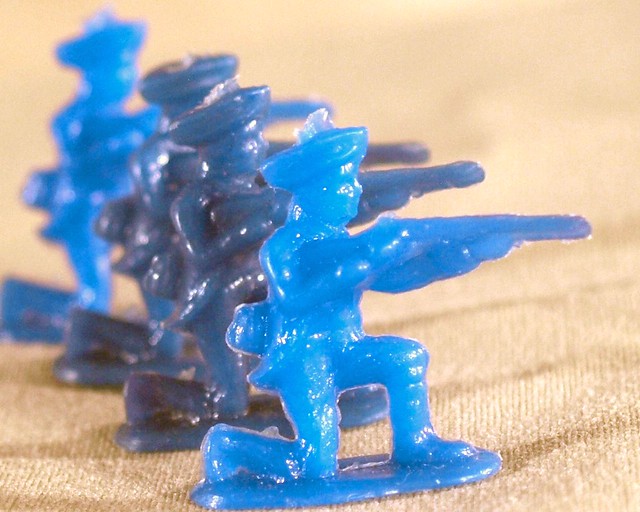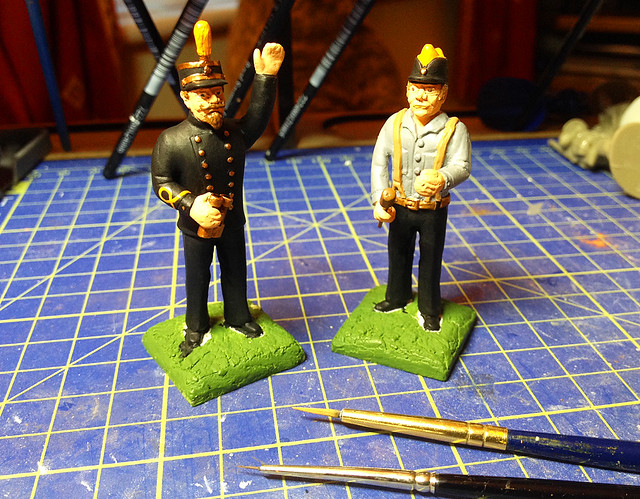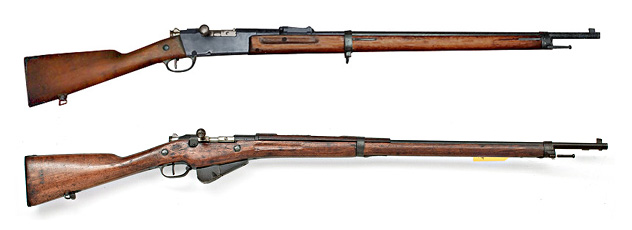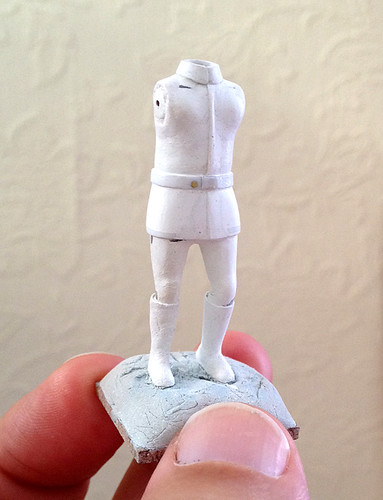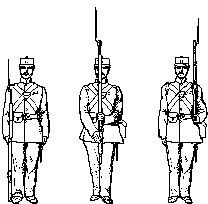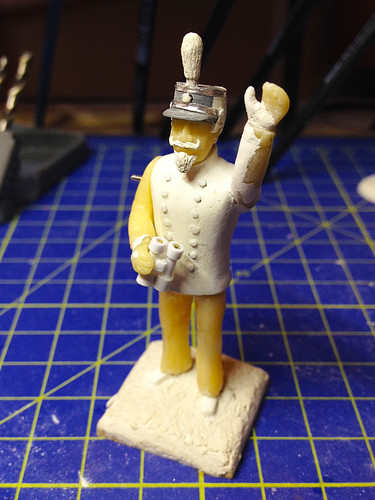One of the interesting and creative parts of the FLW hobby is the creation of a backstory for your 'imagi-nation', I've certainly enjoyed jotting down a 'History of Molatero' (I must post it up at some point). And like any real nation our little creations go through all the social unrest and upheaval that typified the history of the 19th and early 20th centuries, for although they get little mention our little armies must have little societies of civilians who keep the home fires burning.
Late 19th century Europe was a hot-bed of sedition, revolution and social unrest and so it goes without saying that - at some point - the antagonists in our FLW may very well end up being our very own civilian population!
Of late I have noticed, as I trawl around the Ether-net, that a few fellow toy soldier enthusiasts have added civilian figures to their collections - for one reason or another. These may be intended as 'militia' or irregulars but might very well be used for civilian revolutionaries, anarchists or armed criminals.
Over at '...Little Englander' blog the author has featured a lovely set of 42mm 'rabble' and writes that "...the Maltovian National League (MNL) have organised and armed themselves".
I believe these are from Irregular Miniatures 42mm '19th/20th Century Civilians'. Link to the web page showing these is > here < - though, sadly, Irregular Miniatures still uses 'frames' for it's website so you will have use this link > Home < to view the site navigation (Grrrr, damn frames)!
Naturally, I hoped that we 54mm scale collectors might have something similar that could constitute an embryonic 'citizens' army' and quite by chance I came across some quite useful figures over at the 'I Like the Things I Like!' blog...
Now these are 'Toy Soldiers of San Diego' plastic figures and are meant to be figures for use in an Alamo scenario. But I think they could be easily converted with later weapons if needs be, should your time frame be the later 19th century. In fact, quite usefully, these figures come with 'plug in hands and weapons' so the modification process should be quite straight forward.
Sadly the range isn't as varied as the Irregular 42mm range of figures, but with a little creativity one could mix and match these with some of the more 'generic Victorian' looking TSSD 'Wild West' figures to make a nice little militia rabble. (I feel a new project coming on!)
So there you go, Comrades - should you wish to shed the yoke of tyranny and overthrow your Monarchist and Capitalist oppressors - or indeed instigate some anarchy - then you might want to seek out some of these figures...
> Irregular Miniatures web site
> Toy Soldiers of San Diego web site
...Oh, and if you happen to know of any other civilian ranges - particularly in 54mm - then please do let me know!
Being the Ethereal Embassy for the Kingdom of Molatero and it's participation in the Funny Little Wars
Friday 25 October 2013
Wednesday 23 October 2013
How's Harry?
Boy! This is slow work, but my 1/32 sculpted figure's arms are nearing completion. I've gone with the 'default' pose of arms by the side as I imagine this will be a useful basic set.
Rather unfortunately, as I get closer and closer to getting the arms done I realise that I have the bigger worry looming of the sculpting of the hands. Gulp! I think I mentioned that I 'don't do' hands very well - they have always been a bit of a problem all the way from life drawing classes at school to art college.
Now, I have looked at some of the examples I already have in 54mm (1/32) scale - from those on my AiP and Airfix soldiers, to those that came with my Black Hat figures and a also a pack of Historex arms I bought. The quality of modelling I am looking at producing is something halfway between the chunky mitts of the Black Hat and the delicate hands of the Historex...Hopefully!
Rather unfortunately, as I get closer and closer to getting the arms done I realise that I have the bigger worry looming of the sculpting of the hands. Gulp! I think I mentioned that I 'don't do' hands very well - they have always been a bit of a problem all the way from life drawing classes at school to art college.
Now, I have looked at some of the examples I already have in 54mm (1/32) scale - from those on my AiP and Airfix soldiers, to those that came with my Black Hat figures and a also a pack of Historex arms I bought. The quality of modelling I am looking at producing is something halfway between the chunky mitts of the Black Hat and the delicate hands of the Historex...Hopefully!
Monday 21 October 2013
Even more uniform reference books - for free!
Reference material is like buses, you can't get any for ages and then a load comes at once! (Sorry, I couldn't resist regurgitating that old chestnut!)
I happened to be doing some late night surfing, just tootling around not looking for anything in particular, when I came across the 'Italian Society of Military History' web site. It's in Italian - naturally - so it was quite a feat of luck that I came across their download section (thank goodness for Google Chrome's translate feature)!
The site has a pretty large PDF archive, the contents of which is offers FOR FREE. I didn't expect much so imagine my surprise when I came across Koppen's 1890 'Armies of Europe' and the NYPL - Vinkhuijzen Collection's 'Uniformi Svizzere 1875-1909'!
Now, as far as I understand both of these antique publications are now in the public domain having been out of publication for well over 100 years, so I was happy to make use of this resource and downloaded...
Koppen's 1890 'Armies of Europe'
Actually, although - of course - the quaintly illustrated colour plates are very welcome this book has wealth of period text describing the disposition and organisation of the armies that it covers. These include; Britain, Germany, Austro-Hungary, Italy, France, Russia, Denmark, Sweden and Norway, Spain and Portugal, Switzerland, Holland and Belgium and Turkey and The States of the Balkan Peninsula!
To be honest, the colour plates are not the best illustrations I have seen - I'm almost tempted to say that they are intended for a younger audience - and to make matters worse whoever scanned this publication did so rather amateurishly and the plates are rather dark (hiding some of the more subtle colours). The example plates I have included here have been Photoshoped by myself to enhance brightness, contrast and vibrance and are now a little more useful.
However, I was very pleased that the publication included a few armies that are not usually covered and in particular appreciated the fact that the Scandinavian nations were represented.
As mentioned, the monochrome printed pages are just as useful, I think, and these include some charming line drawing as well. The PDF includes some 172 pages but a rather nice 'added bonus' were the amusing Victorian advertisements included at the back of the book!
All in all, this is a wonderful volume and definitely fills in some of the reference holes that modern material leaves in the history of European uniforms of the period.
Koppen's 1890 Armies of Europe - PDF direct download link
'Uniformi Svizzere 1875-1909'
Ah, Switzerland! Cookoo clocks and chocolate...And home of one of the damn finest armies in Europe!
No, these sturdy chaps didn't see any action in the 19th/20th centuries, but that didn't stop them becoming one of the more modern, professional and well equipped armed forces on the continent. For sure, if anyone had infringed their neutrality then they would have payed a very high price for doing so.
But anyway, Switzerland - or Army Red and White to put it in Funny Little Wars terms - is a wonderful subject for a book on uniforms as they really do turn out a smart body of men.
The book - some 45 pages long - is actually more of a pictorial study or collection of period lithographs. There is no accompanying text other than some very short captions within the illustrations themselves. But what illustrations!
The artwork in this collection is absolutely wonderful, realistic, full of character and a delight in detail. It includes individual figure from most organisational arms, each captured in what looks like manoeuvres in the field. It's all very atmospheric and dynamic and - unlike 'Armies of Europe' has been scanned with some degree of expertise.
As well as a glorious reference tome these colour plates would look very handsome indeed in picture frames, they are that attractive. But the real joy of well drawn illustrations like these is the level of detail when it comes to the uniforms, there is little room for doubt as every uniform is captured accurately.
The Swiss army may be something of a niche subject - although I can think of at least one of my readers who will be very pleased with this book - but one cannot help but being very impressed with these superb illustrations.
'Uniformi Svizzere 1875-1909' - PDF Direct download link
My thanks goes out to the Italian Society of Military History for making these publications available freely to it's visitors. You can see it's full download archive here: Società Italiana di Storia Militare - ARCHIVIO LIBRI IN REGALO
I happened to be doing some late night surfing, just tootling around not looking for anything in particular, when I came across the 'Italian Society of Military History' web site. It's in Italian - naturally - so it was quite a feat of luck that I came across their download section (thank goodness for Google Chrome's translate feature)!
The site has a pretty large PDF archive, the contents of which is offers FOR FREE. I didn't expect much so imagine my surprise when I came across Koppen's 1890 'Armies of Europe' and the NYPL - Vinkhuijzen Collection's 'Uniformi Svizzere 1875-1909'!
Now, as far as I understand both of these antique publications are now in the public domain having been out of publication for well over 100 years, so I was happy to make use of this resource and downloaded...
Koppen's 1890 'Armies of Europe'
Actually, although - of course - the quaintly illustrated colour plates are very welcome this book has wealth of period text describing the disposition and organisation of the armies that it covers. These include; Britain, Germany, Austro-Hungary, Italy, France, Russia, Denmark, Sweden and Norway, Spain and Portugal, Switzerland, Holland and Belgium and Turkey and The States of the Balkan Peninsula!
To be honest, the colour plates are not the best illustrations I have seen - I'm almost tempted to say that they are intended for a younger audience - and to make matters worse whoever scanned this publication did so rather amateurishly and the plates are rather dark (hiding some of the more subtle colours). The example plates I have included here have been Photoshoped by myself to enhance brightness, contrast and vibrance and are now a little more useful.
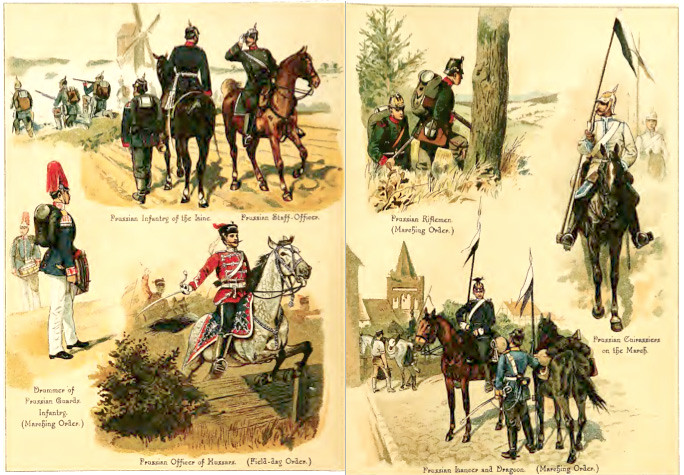 |
| One of the colour plates for the German army. All together - Boo! Hiss! |
However, I was very pleased that the publication included a few armies that are not usually covered and in particular appreciated the fact that the Scandinavian nations were represented.
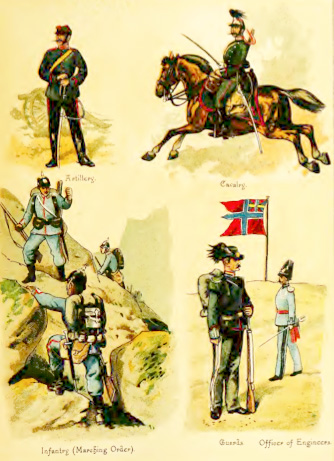 |
| Norway! Huzzah! |
As mentioned, the monochrome printed pages are just as useful, I think, and these include some charming line drawing as well. The PDF includes some 172 pages but a rather nice 'added bonus' were the amusing Victorian advertisements included at the back of the book!
All in all, this is a wonderful volume and definitely fills in some of the reference holes that modern material leaves in the history of European uniforms of the period.
Koppen's 1890 Armies of Europe - PDF direct download link
'Uniformi Svizzere 1875-1909'
Ah, Switzerland! Cookoo clocks and chocolate...And home of one of the damn finest armies in Europe!
No, these sturdy chaps didn't see any action in the 19th/20th centuries, but that didn't stop them becoming one of the more modern, professional and well equipped armed forces on the continent. For sure, if anyone had infringed their neutrality then they would have payed a very high price for doing so.
But anyway, Switzerland - or Army Red and White to put it in Funny Little Wars terms - is a wonderful subject for a book on uniforms as they really do turn out a smart body of men.
The book - some 45 pages long - is actually more of a pictorial study or collection of period lithographs. There is no accompanying text other than some very short captions within the illustrations themselves. But what illustrations!
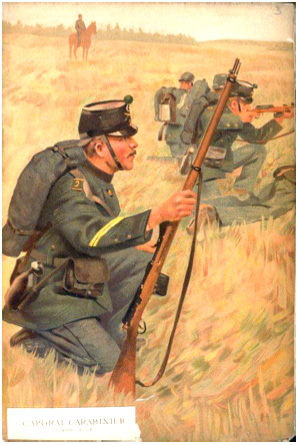 |
| The rifle is the 1889 Schmidt-Rubin in 7.5×53.5mm. Unusually for the time it had a 12 round capacity. |
As well as a glorious reference tome these colour plates would look very handsome indeed in picture frames, they are that attractive. But the real joy of well drawn illustrations like these is the level of detail when it comes to the uniforms, there is little room for doubt as every uniform is captured accurately.
The Swiss army may be something of a niche subject - although I can think of at least one of my readers who will be very pleased with this book - but one cannot help but being very impressed with these superb illustrations.
'Uniformi Svizzere 1875-1909' - PDF Direct download link
My thanks goes out to the Italian Society of Military History for making these publications available freely to it's visitors. You can see it's full download archive here: Società Italiana di Storia Militare - ARCHIVIO LIBRI IN REGALO
Sunday 20 October 2013
Vive la différence!
Between project tasks I've been slowly assembling some of my 1/32 Black Hat metal French Infantry of the Line figures. They are a nice change of pace from the intense concentration I've been doing with my sculpting project.
The other good thing about this French side project is that it isn't a long term project as I don't intend these figure to be used as a core of some French inspired FLW army. They are a stand-alone set I'm just doing for some fun. (I do have a metal 'Horizon Blue' FLW in mind, but this will be based on the rather smaller '54mm' figures of Dorset and Irregular miniatures. This project is a long term idea and is just in the 'collecting phase' at the moment.)
Any way - Vive la différence!
I do really like the Black Hat '54mm' range - though they are of the larger end of the 54mm spectrum (what I call 1/32 to help differentiate them). They wouldn't be compatible with vintage Britains toy soldiers, for example.
One other thing about the Black Hat range is that it is rather limited. They have a selection of these marching infantrymen and officers, but aside from their artillery team figures they so not have a great variety in poses and supporting characters. So, if you want to build an army based on the Black Hat figures you would have to be prepared to do a fair amount of conversion in order to be able to portray the many types of troops you need.
The paperback reference book is by a company called G.I. and is in the vein of Osprey's reference publications. Called 'Fix Bayonets: U.S.Infantry from the American Civil War to the Surrender of Japan' it's an illustrated history of American uniforms which encompasses the time period that most interests me - 1890-1910 (though the book, in total, covers a period from 1865-1946).
I have never really been bitten by the American Civil War bug and American military history as a whole is a bit of a yawn to me, BUT the one era I do find of interest is my target era when America looked more externally and dallied with what can be described as a 'colonial' state of mind. From the Spanish-American War to the Boxer Rebellion the United States seemed to fall in-line with the other great powers and this was also true of their uniforms.
Although the US Army retained a distinctively American style to their dress, but at least in their 1881-1900 dress uniforms they assimilated a distinctly European influence which perhaps suggested a dalliance with the idea of competing on a global stage before they once again returned to their inward looking politics prior to the First World War.
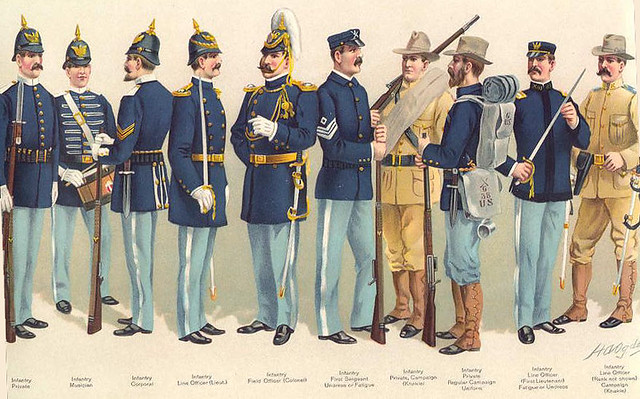 |
| Circa 1899 - this lovely colour plate from the G.I. book shows a good selection of US rank and officer dress and campaign uniforms. Source: G.I. Books - see links below. |
Of course the above idea is only my own opinion, but from the point of view of an exponent of Funny Little Wars it seems to me that this short window of time would be the ideal time on which to base a Army Red/White/Blue.
The book itself does not have the series of specially illustrated colour plates that the Osprey reference books have but rather has a small selection of period colour lithographs and photographs at the beginning of the book. The rest of the publication is a chronographic record of the uniforms of the US Army by means of original monochrome photography.
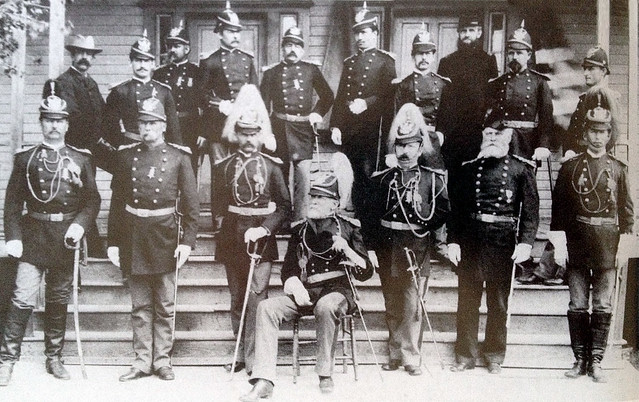 |
| Officers of the 17th US Infantry c. 1884 - note the almost Teutonic look of the officer bottom left! Source: G.I. Books - see links below. |
Commentary, such as there is, is restricted to the short captions which accompany the photographs. I was left with a feeling that I wanted to know more and so, ironically, might look into whether Osprey do a similar reference book!
The G.I. publication is more of a complimentary item if you are researching the subject and the period, and would - I think - be a very useful companion volume to something like an Osprey 'Men at Arms' book.
Still, for just £5 (second hand from Barbican Books) it is a very entertaining - and educational - booklet. I was unaware of just what the United States was 'up to' during my favoured 1890-1910 period of time. The collection of photographs are excellent and I might even be tempted to seek out the relevant G.I. cavalry volume which covers the same period.
Relevant links:
> Black Hat Miniatures (UK) - 54mm toy soldiers range
> Greenhill Books (for G.I. Books in UK)
> Stackpole Books (for G.I. Books in USA)
> Barbican Bookshop York - a lovely little treasure trove of second-hand books.
Thursday 17 October 2013
Don't hurry Harry!
Things don't always go right. The first set of arms that I made for Harry turned out to be the completely wrong shape, so I ditched them and started again. Ah well...
This time I am taking my time and trying to do things properly. I had wanted to get Harry up to my brother this week but I don't see the point in hurrying things along as we aren't really on any sort of deadline (and he has his own projects anyway).
Left: I'm using Blu-Tack to hold the armature securely while I work on the arms. Once I have the general shape of the arms I will remove them and start sanding them down into a more finished state.
So, back to square one and this time I'm taking my time.
As you can see I have also cobbled together a temporary head in order to pin down a specific size for when I start making my own heads from scratch. It's a bit of a hybrid based on a Black Hat figure head and features and size taken from Armies in Plastic figures...
Black Hat and Armies in Plastic are the two figure ranges that I want my figures to be compatible with so it's important that my design can blend in with their models. The good news is that once I fitted the temporary head the height of my figure came to exactly 54mms - which translates into 5'9" in 1/32 scale, a good average height for this scale.
Onwards and upwards...
This time I am taking my time and trying to do things properly. I had wanted to get Harry up to my brother this week but I don't see the point in hurrying things along as we aren't really on any sort of deadline (and he has his own projects anyway).
Left: I'm using Blu-Tack to hold the armature securely while I work on the arms. Once I have the general shape of the arms I will remove them and start sanding them down into a more finished state.
So, back to square one and this time I'm taking my time.
As you can see I have also cobbled together a temporary head in order to pin down a specific size for when I start making my own heads from scratch. It's a bit of a hybrid based on a Black Hat figure head and features and size taken from Armies in Plastic figures...
 |
| The Black Hat head is a good starting point for a 1/32 noggin. It will allow me to visualise the size and general shape I need to make my heads. |
Black Hat and Armies in Plastic are the two figure ranges that I want my figures to be compatible with so it's important that my design can blend in with their models. The good news is that once I fitted the temporary head the height of my figure came to exactly 54mms - which translates into 5'9" in 1/32 scale, a good average height for this scale.
Onwards and upwards...
Wednesday 16 October 2013
Britains No. 1263 '12 Pounder' light gun
One of those fortuitous eBay finds, these two Britains No. 1263 '12 Pounder' light field guns. Now I was already undertaking my own conversion of a Britains 25 Pounder in order to make just such a light - or 'mountain' - gun. However, this bit of luck negates the necessity of all that hard work.*
They were going for peanuts - another of those sales that had been badly and misleadingly described and so wasn't picked up by the ardent diecast collectors - so I snapped them up immediately (despite having already gone over this months toy budget).
The toy is a pretty simple one and has neither the breech loading nor adjustable elevation of the Britains No. 1201 18 Pounder or the No. 1264 4.7 inch Naval Gun. It uses the spring 'pull back' lever system similar to Britains 25 Pounder gun (and so, in effect, is a muzzle loader). It's also relatively small - being roughly half of a 1/32 figure's height - which is understandable as it is, after all, a 'light' gun.
Historical note: I am not entirely sure what the basis for this model is - or was. It looks to me like an attempt to replicate an early breech-loading piece, a very early version at that as it has no recoil suppressor and is mounted on a cannon carriage. The closest historical piece I can find that is similar to the Britains toy is perhaps the British 1859 12 pdr. Armstrong Gun...
 |
| The 20 Pounder version of the Armstrong breech loader. Although these guns had no shield fitted I no reason why at some point one might not have been retro-fitted. |
EDIT UPDATE: My brother has done a bit of research and found a artillery piece which seems to fit the bill as the inspiration for this Britains toy gun. It's the 1892 Ordnance BL 12-pounder 6 cwt. In 1899 a primitive recoil system was rigged but in any case it had a short service life - seeing moves to replace it as early as 1901. Again, the problem is that this gun didn't have a shield in any reference I have been able to find so I must conclude that this *may* have been a bit of creative thinking on the part of Britains (unless anyone out there knows any different?).
 |
| BL 12 Pounder 6 cwt in use with the RHA in 1897. Source: Wikipedia |
I have it in mind that these shall constitute the light artillery support for my Molaterian Jaegers (they being my designated mountain warfare specialists) and will complete my modest collection of light, medium and heavy artillery for my army, along side those Britains guns I have already collected.
Harry - A call to arms
Having finished Harry's body to a satisfactory level I want to make some quick arms and a head to act as 'scale templates' so while Harry is in Scotland being duplicated in resin I can continue with my work.
I'm not too worried about specific poses - just yet - I just want a couple of arms that are dimensionally and proportionally correct. So, I'm starting with my trusty - and nicely bendy - garden wire again (very cheap from Wilkos) to provide the 'bones' and them I'm applying a thin layer of Milliput.
I'll slowly build up the thickness of the arms until they take the form I want and then I will add the hands. The hands are the part of this project that worry me as I have always found doing hands - in my illustrations - most difficult. Doing elements which are so delicate at such a small scale could be very tricky indeed - especially to a beginner like myself.
Next: Hopefully not gorilla arms!
I'm not too worried about specific poses - just yet - I just want a couple of arms that are dimensionally and proportionally correct. So, I'm starting with my trusty - and nicely bendy - garden wire again (very cheap from Wilkos) to provide the 'bones' and them I'm applying a thin layer of Milliput.
I'll slowly build up the thickness of the arms until they take the form I want and then I will add the hands. The hands are the part of this project that worry me as I have always found doing hands - in my illustrations - most difficult. Doing elements which are so delicate at such a small scale could be very tricky indeed - especially to a beginner like myself.
Next: Hopefully not gorilla arms!
Tuesday 15 October 2013
eBook: Uniforms of the Belgian Army 1880-90
As mentioned a few times over the past couple of weeks I am somewhat consumed by the history of the Belgian army at the turn of the 19/20th century. However, like so many military themes set in the 'hiatus' period between the end of the Franco-Prussian War and the start of World War One getting good reference material is something of a problem*. Publishers like Osprey, for example, just do not seem to be interested in the organisation of armies during peace time periods, their attitude seems to be that if there is no conflict or campaign military enthusiasts are just not interested!
*Of course there was the Boxer Rebellion and some colonial action, including the Boar War, but otherwise this period - between 1871 and 1914 - seems to be a period of preparation for The Great War!
Anyway, thus far the volumes of greatest use to me have been Haswell Miller's 'Vanished Armies' and Osprey's 'The Belgian Army in World War 1', both of which - of course - focus of the build up and early years of The Great War. However, they do include a interesting insight into the way that European armies transitioned from the Edwardian peacetime uniforms into the drabber battledress of trench warfare.
Well, luckily for me I happened across a slim title from the Soldiershop.com entitled 'Uniforms of the Belgian Army 1880-90'. It's more of an illustrated pamphlet than an in-depth study but it has the advantage of being an authentic period piece (re-published by the said online reference publisher).
Left: Originally published in 1893, the original pamphlet has been converted into an eBook by Soldiershop.com (Photo: Soldiershop.com)
This little book contains 12 colour lithographs featuring a total of 59 figures representing the cavalry, infantry, artillery, auxiliary and general staff of the Belgian army.
The illustrations are wonderfully quaint, but equally they are crisp and clear and give a good rendition of the colours of the various arms. Accompanying text is limited, I'm afraid, to one brief line per figure on the opposing page, giving the unit and rank of the soldier depicted. It's a great pity that this scant information has not been expanded on in some sort of supplement at the back of the re-publication, but beggars can't be choosers.
The reference that this little book affords me is greatly appreciated and will inspire, no doubt, some very creative and colourful toy soldiers for my army of Molatero! But most of all I greatly appreciated the price of this book...Gratis!
That's right, this eBook didn't cost me a penny.
Now don't ask me why, for as far as I could see this PDF download should have cost me 7.50 Euros - a price, I hasten to add, that I was more than happy to pay - but perhaps due to some strange glitch at the PayPal end of Soldiershop.com's shopping cart process I could not seem to complete the transaction. Hugely disappointed I abandoned my attempt to buy the item, but on checking my email this morning I found I had been sent a link to the download for this PDF in any case!
Bizzarre! (But, hey, I'm not going to complain!)
Soldiershop.com has some additional eBooks that interest me - mainly on the French army of my target period of around 1890 - so I may be tempted to try and see if the same glitch applies. ;)
But in any case, as I said, for such a niche publication the stated price of 7.50 Euro is definitely worth the paying...IF you can pay that is.
*Of course there was the Boxer Rebellion and some colonial action, including the Boar War, but otherwise this period - between 1871 and 1914 - seems to be a period of preparation for The Great War!
Anyway, thus far the volumes of greatest use to me have been Haswell Miller's 'Vanished Armies' and Osprey's 'The Belgian Army in World War 1', both of which - of course - focus of the build up and early years of The Great War. However, they do include a interesting insight into the way that European armies transitioned from the Edwardian peacetime uniforms into the drabber battledress of trench warfare.
 |
| Liebig S608 Belgian Military Uniforms 1899 - these collectors cards were given away with their beef extract! Hey, I'll take reference where I can get it! Picture source: Cigcardpix Flickr album |
Well, luckily for me I happened across a slim title from the Soldiershop.com entitled 'Uniforms of the Belgian Army 1880-90'. It's more of an illustrated pamphlet than an in-depth study but it has the advantage of being an authentic period piece (re-published by the said online reference publisher).
Left: Originally published in 1893, the original pamphlet has been converted into an eBook by Soldiershop.com (Photo: Soldiershop.com)
This little book contains 12 colour lithographs featuring a total of 59 figures representing the cavalry, infantry, artillery, auxiliary and general staff of the Belgian army.
The illustrations are wonderfully quaint, but equally they are crisp and clear and give a good rendition of the colours of the various arms. Accompanying text is limited, I'm afraid, to one brief line per figure on the opposing page, giving the unit and rank of the soldier depicted. It's a great pity that this scant information has not been expanded on in some sort of supplement at the back of the re-publication, but beggars can't be choosers.
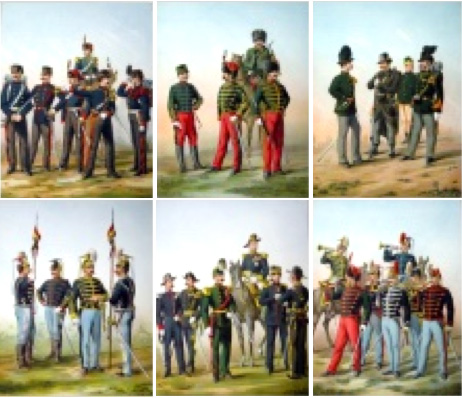 |
| Some thumbnails of the plates showing the great diversity of uniforms which typified a pre-WW1 European army, even one as small as the Belgian. Picture source: Soldiershop.com |
That's right, this eBook didn't cost me a penny.
Now don't ask me why, for as far as I could see this PDF download should have cost me 7.50 Euros - a price, I hasten to add, that I was more than happy to pay - but perhaps due to some strange glitch at the PayPal end of Soldiershop.com's shopping cart process I could not seem to complete the transaction. Hugely disappointed I abandoned my attempt to buy the item, but on checking my email this morning I found I had been sent a link to the download for this PDF in any case!
Bizzarre! (But, hey, I'm not going to complain!)
Soldiershop.com has some additional eBooks that interest me - mainly on the French army of my target period of around 1890 - so I may be tempted to try and see if the same glitch applies. ;)
But in any case, as I said, for such a niche publication the stated price of 7.50 Euro is definitely worth the paying...IF you can pay that is.
Monday 14 October 2013
Heavy gun team complete
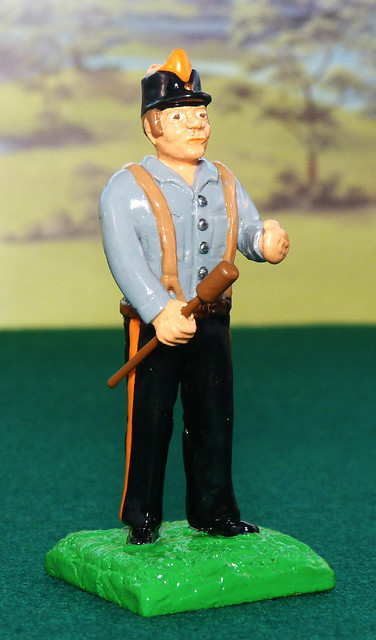 |
| Gilbert the Rammer! |
 |
| Lt. Cuthbert - gunnery officer |
I'm quite pleased with this set, I think Cuthbert in full uniform was the right choice as the contrast between the four characters makes the team look more authentic. I am definitely glad I went with this Belgian army inspired uniform - I was very impressed by some of the Belgian WW1 uniforms and I will be dipping into this reference source again no doubt.
I really have to give a mention to Black Hat Miniatures (UK) as the basic gun team figure is theirs, and it was a superb starting point for my conversion project. Big thank you to them.
Well, what now? I'll take stock and then decide which one of my back-log of projects to get on with - but finishing my first FLW unit has given me a bit of motivation. I hope you like them.
Coveted childhood toy soldiers
I was reading the very enjoyable 'Mannie Gentile: Toy Soldiers Forever' blog article about where his obsession with toy soldiers started and this put me in mind of the first time I really got excited and wanted to own my own plastic army.
When I was very young I used to enjoy the American comics published by Harvey, in particular I was a fan of Casper the Friendly Ghost (I kid you not)! But what always used to catch my attention were those fantastic adverts for amazing toys that they had in the back of the comic...
Oh, how I wanted those 204 Revolutionary War Soldiers! I would read and re-read the list of what was included and imagine how good the collection would look on my bedroom floor.
Of course I never got my grubby little hands on them and eventually forgot about just how much I REALLY needed them. But Mannie's post had me thinking about them again and I wondered if I could find any photos of what they actually looked like. Would they be as fantastic as I had imagined, or would they be as disappointing as I have since found out that many of the other 'amazing' toys were that were advertised in these American comics (like the child-sized Polaris Submarine which turned out to be little more than a cardboard box).
Well I eventually tracked dow a blog which unmasked the Revolutionary War Soldiers - 'Plastic Toy Soldier Pictures' has some nice photos which show exactly what you got for you $1.98...And it's pretty much what you might imagine you might get for that amount (though as a kid I still think I might have been mildly impressed, maybe)...
I guess the moral of this story is - don't revisit things you thought were 'amazing' as a child as you will invariably be disappointed!
When I was very young I used to enjoy the American comics published by Harvey, in particular I was a fan of Casper the Friendly Ghost (I kid you not)! But what always used to catch my attention were those fantastic adverts for amazing toys that they had in the back of the comic...
Oh, how I wanted those 204 Revolutionary War Soldiers! I would read and re-read the list of what was included and imagine how good the collection would look on my bedroom floor.
Of course I never got my grubby little hands on them and eventually forgot about just how much I REALLY needed them. But Mannie's post had me thinking about them again and I wondered if I could find any photos of what they actually looked like. Would they be as fantastic as I had imagined, or would they be as disappointing as I have since found out that many of the other 'amazing' toys were that were advertised in these American comics (like the child-sized Polaris Submarine which turned out to be little more than a cardboard box).
Well I eventually tracked dow a blog which unmasked the Revolutionary War Soldiers - 'Plastic Toy Soldier Pictures' has some nice photos which show exactly what you got for you $1.98...And it's pretty much what you might imagine you might get for that amount (though as a kid I still think I might have been mildly impressed, maybe)...
I guess the moral of this story is - don't revisit things you thought were 'amazing' as a child as you will invariably be disappointed!
Sunday 13 October 2013
News from Scotland - metal casting practise
Thought it might be interesting to post up some of my brother's progress in his metal casting with Prince August moulds...
This 3 piece mould kit from Prince August produces a 54mm , 10 piece, white metal model kit of a 10th Hussars ( Prince of Wales Own) Kettle Drummer...
Although no specific date is given, the drummer is wearing a busby which was replaced by the Shako somewhere around 1812/13 and it was not uncommon for both styles to be worn by troopers in the same unit at the same time. This also applies to other uniform changes of the time, particularly the colours of the uniform trimmings. This model would be OK for a Napoleonic scenario.
It took some time and multiple failed castings to get the hang of it. The Lee production pot was a great help especially combined with a multimeter with a temperature probe which allowed me to play around with different temperatures as well as just getting used to the Lee pot.
The best castings were produced when:-
The moulds were preheated either by casting or by heating in the oven
The metal was in the range 320 - 395C when poured.
The insides of the moulds were well dusted with talcum powder.
The moulds were properly aligned and firmly clamped.
The mould was vigorously 'tapped' for 10 - 20 seconds while the metal was still liquid.
The casting was allowed to cool down properly before de-moulding.
Additional vents and reliefs were cut at critical points in the mould.
The moulds were quite good quality although the location of some of the sprues and the orientation of the pieces was questionable and in some cases ( especially the drum covers) they couldn't have located the sprue in a worse place. Even with a perfect casting, a lot of otherwise unnecessary work is needed to remove the remnants of the sprue right at the spot where the drum is supposed to locate. If they had just turned the covers upside down when making the mould there would have been no problem.
A descent start, I think, into metal casting and, based on the results from this second hand mould with some minor wear/damage, I'm confident that I can get some good castings from a new mould. I rather fancy the Prince August 54mm Napoleonic Cannon. (I might be able to flog some to that Molaterian rabble).
------
Nice stuff! I do like the Prince August stuff though I do find their catalogue of soldiers somewhat limited (and expensive). However, they do provide a great way to start your investigation into metal moulding with their range of 'beginners' kits.
Ian's done a lovely job here, particularly with documenting the process. His experience gathered from this practise casting means that when it comes to producing a metal 'Harry' he will be able to create the most efficient mould arrangement.
...So I better get my skates on and provide him with something to mould! :)
(And yes, Molatero would be very keen on acquiring some new cannon!)
This 3 piece mould kit from Prince August produces a 54mm , 10 piece, white metal model kit of a 10th Hussars ( Prince of Wales Own) Kettle Drummer...
Although no specific date is given, the drummer is wearing a busby which was replaced by the Shako somewhere around 1812/13 and it was not uncommon for both styles to be worn by troopers in the same unit at the same time. This also applies to other uniform changes of the time, particularly the colours of the uniform trimmings. This model would be OK for a Napoleonic scenario.
It took some time and multiple failed castings to get the hang of it. The Lee production pot was a great help especially combined with a multimeter with a temperature probe which allowed me to play around with different temperatures as well as just getting used to the Lee pot.
The best castings were produced when:-
The moulds were preheated either by casting or by heating in the oven
The metal was in the range 320 - 395C when poured.
The insides of the moulds were well dusted with talcum powder.
The moulds were properly aligned and firmly clamped.
The mould was vigorously 'tapped' for 10 - 20 seconds while the metal was still liquid.
The casting was allowed to cool down properly before de-moulding.
Additional vents and reliefs were cut at critical points in the mould.
The moulds were quite good quality although the location of some of the sprues and the orientation of the pieces was questionable and in some cases ( especially the drum covers) they couldn't have located the sprue in a worse place. Even with a perfect casting, a lot of otherwise unnecessary work is needed to remove the remnants of the sprue right at the spot where the drum is supposed to locate. If they had just turned the covers upside down when making the mould there would have been no problem.
A descent start, I think, into metal casting and, based on the results from this second hand mould with some minor wear/damage, I'm confident that I can get some good castings from a new mould. I rather fancy the Prince August 54mm Napoleonic Cannon. (I might be able to flog some to that Molaterian rabble).
------
Nice stuff! I do like the Prince August stuff though I do find their catalogue of soldiers somewhat limited (and expensive). However, they do provide a great way to start your investigation into metal moulding with their range of 'beginners' kits.
Ian's done a lovely job here, particularly with documenting the process. His experience gathered from this practise casting means that when it comes to producing a metal 'Harry' he will be able to create the most efficient mould arrangement.
...So I better get my skates on and provide him with something to mould! :)
(And yes, Molatero would be very keen on acquiring some new cannon!)
Saturday 12 October 2013
Heavy gun crew nearly complete
I'm just putting the final touches to the last two of my Molaterian heavy artillery crew. I wasn't sure if the all black uniform of the officer would work, but I can now say that I'm very pleased with it...
Hardest part was carefully painting on the officer's cuff rank insignia. Boy, do I have wobbly hands!
...Soon have my very first completed Molaterian unit! (Albeit probably one of the smallest.)
The melting pot cometh!
Good news from my brother - the little elf who is busying away with all the clever production stuff that I don't understand! Thank goodness for a technically minded bruv who is taking possession of a Lee Production Pot!
He's been making some terrific progress with his investigations into metal casting and has even tried out the process with a commercial mould made by Prince August...
However, ever the perfectionist, he has decided that the ad hoc 'kitchen hobby' way of doing things wasn't the way to go and he wanted something a little more sturdy for working with molten metal (and something less likely to end up setting fire to him and his house)! Hence the Lee pot.
The eventual goal is for him to cast 'Harry' in metal. Obviously this is a long term project as poor Harry hasn't even got arms or a head yet - but knowing my brother he will spend a lot of time now perfecting his new skill until he is satisfied with the process and the quality of his castings.
...In my head, though, I am starting to think of the prospect of a metal Molaterian regiment! One can but dream.
He's been making some terrific progress with his investigations into metal casting and has even tried out the process with a commercial mould made by Prince August...
 |
| Ian picked up this Prince August mould on eBay quite cheaply and the quality looks superb. Believe it or not he used a second hand pewter tankard as the source of his metal! |
However, ever the perfectionist, he has decided that the ad hoc 'kitchen hobby' way of doing things wasn't the way to go and he wanted something a little more sturdy for working with molten metal (and something less likely to end up setting fire to him and his house)! Hence the Lee pot.
The eventual goal is for him to cast 'Harry' in metal. Obviously this is a long term project as poor Harry hasn't even got arms or a head yet - but knowing my brother he will spend a lot of time now perfecting his new skill until he is satisfied with the process and the quality of his castings.
...In my head, though, I am starting to think of the prospect of a metal Molaterian regiment! One can but dream.
Friday 11 October 2013
Arms shipment arrives - French rifles
"The Office of the War Department of Molatero is pleased to announce that it has just taken delivery of some of the very latest rifles in order to evaluate their suitability as the new standard infantry weapon. The Lebel and Berthier rifles exemplify some of the latest technological advancements in infantry long arms and will complete with other designs to become the sole model of firearm that will replace the diverse, and in some cases obsolete, infantry weapons that currently make up our army's inventory." General de Brigadă Mustăți-Mari, 1907.
Today I received a small package from Reedees Miniature containing two packets of their 1/32 resin model rifles. As normal, before I go trying to scratch build anything I like to examine a commercial example of a similar object first so I can get a sense of scale and level of detail required.
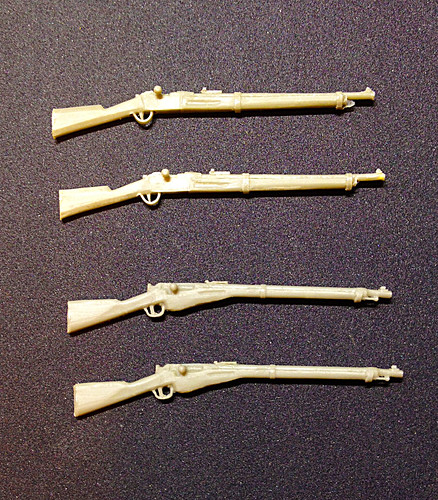 |
| The Reedees Minatures 1/32 scale resin rifles; top is the Lebel and bottom is the more modern Berthier. |
The two rifle sets I received were the 1886 Lebel set and the 1907 Berthier set, both representing state of the art French rifles from the turn of the 19th/20th century. To be frank, the only reason that I sourced these French models was that I could not find any other 1/32 scale model rifles - I would have preferred a Mosin-Nagant or a Mannlicher style rifle if I could have found one.
However, these lovely Reedees models are very fine examples of the model makers art and will do just nicely for my purposes. I have a good idea of scale and can work on a Mosin-Nagant of my own, taking the scale measurements from the Reedees guns.
I'm not sure if I will be able to match the Reedees models for quality, but they do give me a target to shoot for!
There are two rifles per pack, and the packs are £4.50 each - prices, as you might guess, are really for the ardent display modeller!
Links: Reedees Miniatures (UK)
> Wikipedia: The Lebel M1886 Rifle
> Wikipedia: The Berthier Rifle
Tuesday 8 October 2013
Putting the boot in on Harry
Harry has some new boots! And thank goodness the addition of the sturdy footwear has transformed my figure's looks from Christmas elf lookalike to something a little more soldierly.
I finally feel this sculpture is coming together.
Next job will be to sand down the boots to give them a nice smooth polished finish and also add some folds of material where the trousers tuck into the boots. But we are getting there folks!
Thinking ahead, I have to start to work on arm poses as, obviously, Harry will be holding something eventually. My plan is to do two versions of Harry, one with his walking pose as is and then an alternative where he is standing to attention.
From here - with these two generic leg poses - I can model a variety of standard military stances, by making a variety of arm sets, such as;
Link: Refer to this British Army basic Rifle Drill Positions web page (Opens in new window)
If I want my soldier to be firing his weapon I will then have to consider modifying Harry into a third leg/body pose - with body angled and legs apart. So I would end up with three figures in the 'Harry' series:
Luckily, once I have Harry's body done - and duplicated in resin - it will be an easier job to simply convert his body into the other two poses. This should give me the basic tool box I need to make a variety of soldiers.
The uniform's usefulness
I should mention something about his uniform and boots design to finish with. I've tried to pick a fairly generic looking uniform design, one which could be easily used to represent a wide variety of nation's soldiers. Obviously the addition of the high jack boots narrows this universal usefulness, I would - for example - have to modify the figure's trousers if I wanted to depict British Army style infantry (but that would be very easy).
But for a continental European army the jack boots will be a fairly common and useful dress addition. You may be able to visualise that Harry could be the basis for Germanic soldier, or American CW trooper, or - as I had in mind - a soldier of the Balkans. The key to all this universality will, of course, be the headdress - a series of which I will eventually be designing too.
Onwards and upwards dear friends!
I finally feel this sculpture is coming together.
Next job will be to sand down the boots to give them a nice smooth polished finish and also add some folds of material where the trousers tuck into the boots. But we are getting there folks!
Thinking ahead, I have to start to work on arm poses as, obviously, Harry will be holding something eventually. My plan is to do two versions of Harry, one with his walking pose as is and then an alternative where he is standing to attention.
From here - with these two generic leg poses - I can model a variety of standard military stances, by making a variety of arm sets, such as;
- Shoulder/slope arms
- Port arms
- Present arms
- Order arms
- Sling arms
Link: Refer to this British Army basic Rifle Drill Positions web page (Opens in new window)
If I want my soldier to be firing his weapon I will then have to consider modifying Harry into a third leg/body pose - with body angled and legs apart. So I would end up with three figures in the 'Harry' series:
- Harry - relaxed pose (at ease), walking or marching.
- Harold - attention, and basic rifle drill position.
- Henry - dynamic, firing pose or field gun loader, etc.
Luckily, once I have Harry's body done - and duplicated in resin - it will be an easier job to simply convert his body into the other two poses. This should give me the basic tool box I need to make a variety of soldiers.
The uniform's usefulness
I should mention something about his uniform and boots design to finish with. I've tried to pick a fairly generic looking uniform design, one which could be easily used to represent a wide variety of nation's soldiers. Obviously the addition of the high jack boots narrows this universal usefulness, I would - for example - have to modify the figure's trousers if I wanted to depict British Army style infantry (but that would be very easy).
But for a continental European army the jack boots will be a fairly common and useful dress addition. You may be able to visualise that Harry could be the basis for Germanic soldier, or American CW trooper, or - as I had in mind - a soldier of the Balkans. The key to all this universality will, of course, be the headdress - a series of which I will eventually be designing too.
Onwards and upwards dear friends!
The Nordenfelt machine gun
 |
| Source: WIkipedia |
I have a particular fondness - if that's the right word - for primitive hand-cranked machine guns, the Maxim gun is a little new fangled for my tastes! Being that Molatero is a tad behind the times and it's army desperately in need of modernisation I imagine there are quite a few of these peculiar weapons still in service.
Of particular note is the European manufactured Nordenfelt. I became aware of this gun in a novel by Douglas Reeman about the Royal Marines during the Boxer Rebellion called 'First to Land'. What struck me was the notion - expressed in the book - that the British sailors and marines apparently preferred the old hand-cranked Nordenfelt to the Maxim, which was then just coming into service (what serviceman ever likes 'new' things).
Anyway, I was trying to describe the operation of this antique machine gun to my brother - badly - and have been in search of a video that better illustrates how this five-barreled wonder worked. As usual YouTube has come to my rescue with this very informative little segment by (appropriately) 'Forgotten Weapons'...
Monday 7 October 2013
Small things...
Creeping progress on Cuthbert, but some progress is still progress. I've been working on his arms and his pose and also on a small pair of binoculars.
Still some putty work to finish off but that's about it. So that's the four crewmen for my heavy field gun team
I've really enjoyed this set as they are such little characters, which makes me think that I'd like to focus on making the rest of my soldiers little characters too.
This means continuing with a similar style of face or head sculpt. I know this may mean my toy soldiers may be more caricatures than historical miniatures, but I find this more fun.
Still some putty work to finish off but that's about it. So that's the four crewmen for my heavy field gun team
I've really enjoyed this set as they are such little characters, which makes me think that I'd like to focus on making the rest of my soldiers little characters too.
This means continuing with a similar style of face or head sculpt. I know this may mean my toy soldiers may be more caricatures than historical miniatures, but I find this more fun.
Subscribe to:
Posts (Atom)
